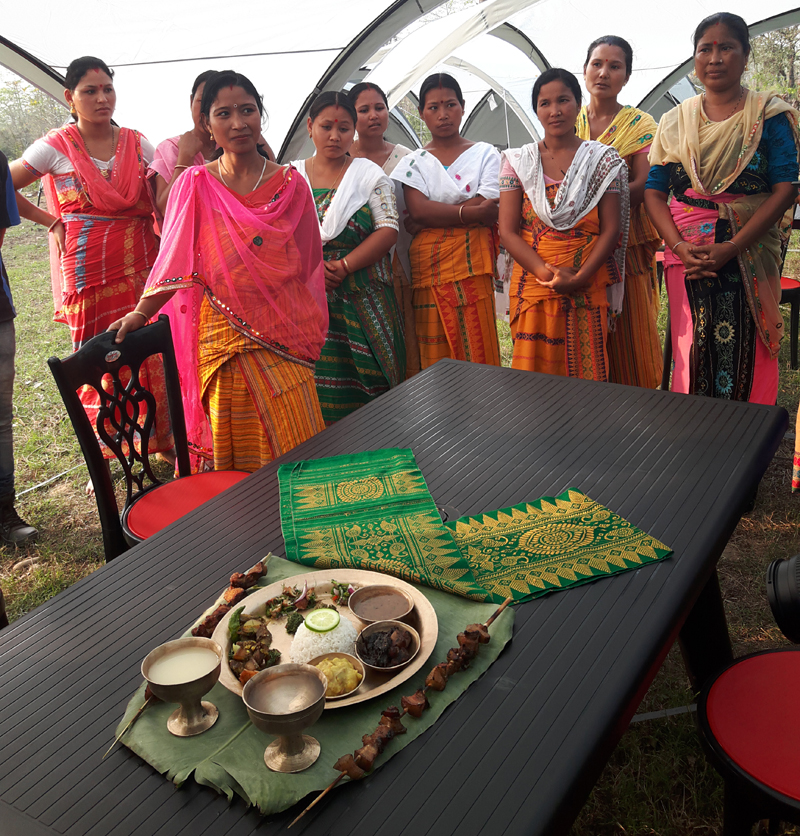WWF-India's Interventions
Rhino Range Expansion
WWF India has worked on rhino conservation for over four decades. In a partnership with the Assam Forest Department and other organisations, WWF India initiated the Indian Rhino Vision 2020 (IRV 2020) in 2005. The programmes vision was to increase the total rhino population in Assam to about 3,000 by the year 2020. It also aimed to significantly ensure that these rhinos are distributed over at least seven protected areas to provide long-term viability of an Assam metapopulation of the species.This was to be achieved by adopting the following three-pronged strategy:
- Enhance protection in the existing rhino-bearing areas
- Undertake range expansion through translocations to re-introduce rhinos from existing rhino bearing areas in potential rhino habitats
- Secure and manage the habitats for rhinos
WWF India partnered with the Uttar Pradesh Forest Department and helped translocate two rhinos to a second enclosure within Dudhwa National Park in an attempt to expand the range. This was set up in 2018, and in 2022 the population has increased to six. The plans indicate a residential rhino population in Katerniaghat WLS within the next couple of years.
WWF India is also actively working in the Valmiki Tiger Reserve in Bihar to conserve the rhinos and extend its natural range. This TR adjoining Nepal often experiences visit by rhinos. We are consistently working to improve the security and habitat conditions in the PA to have a residential rhino population in the area as a transboundary conservation initiative.
RhoDIS
Poaching is the one of the biggest threats for the rhinos globally as its horn is one of the most valuable commodities in the illegal wildlife trade. To improve the crime investigation procedures and help produce scientific evidence to counter poaching, WWF India is collaborating with the MoEFCC, WII and state forest department to implement the RhoDIS India program. WWF helped introduce this Wildlife Forensics tool in India in 2014 by holding a series of workshops by bringing in experts from South Africa, following it up by organising trainings for a few people in South Africa.This program was officially rolled out under the supervision and guidance of the MoEFCC in India in 2016. Since then, the program has helped investigate quite a few rhino poaching cases in India. In addition, the program is also aimed at promoting scientific management of the species by undertaking studies on the genetic health of the rhino population in India.
Rhino Disease Monitoring
WWF India is partnering with the state forest departments, Veterinary Department, and College of Veterinary Science to research wild-ranging rhinos' health. Currently, this study is in its initial stage and has been initiated after a few rhino deaths have been recorded for natural reasons or diseases that need to be adequately investigated to understand the causes and be prepared to face the risk of any disease outbreak. We are also attempting to minimise the chances of disease transmission by facilitating and organising livestock vaccination programs.Community engagement
To seek their support towards rhino conservation and create awareness about IRV 2020 in the state, more than 25,000 villagers (including school children) have been reached out to in Manas and other rhino-bearing areas until now. In partnership with local NGOs and the State Agriculture Department, the livelihood options of the communities living on the park's fringes are being developed by undertaking agriculture support programs. A pilot programme to reduce fuelwood consumption has been undertaken by promoting solar energy and energy-efficient chulhas in the villages around Manas NP.Plans are in place to prepare Laokhowa Wildlife Sanctuary (WLS) and Burachapori WLS to receive rhino populations. In addition, protection and security status in Manas NP continues to be enhanced, and increased activities to garner community support for rhino conservation. For the long-term sustenance of rhino conservation success achieved so far, the continuation of solid community support received so far in the future will also be very critical. WWF India has been working closely with local communities settled close to rhino habitats to sustain the acceptance of local communities to co-exist with rhinos by sharing space and resources. The primary focus of WWF India’s interventions has been as follows:
1. To offset the high cost of conservation success that are being borne by local communities. In this regards, local communities have been supported to set up Community Based Tourism enterprises through which the communities receive direct benefits from the tourist visiting to see rhino and associated wildlife. As part of the initiatives, series of capacity building workshops were organised and basic logistic supports to run the facilities were provided.

2. As an initiative to reduce dependency on natural resources, direct alternate options in the form of LPG connection to minimise the use of firewood and fodder crop cultivation to reduce free grazing were provided to local villagers. In addition, certain locally feasible income generation activities were also promoted in weaving, apiculture, mushroom cultivation etc., to make additional cash available in their hand to access suitable alternate from the market.


Rhino

Rhinos

20 February, 2012: Four rhinos successfully translocated from Kaziranga to Manas National Park under the IRV 2020 programme.

























